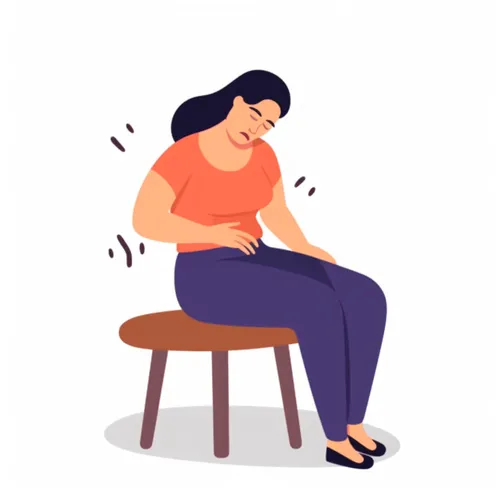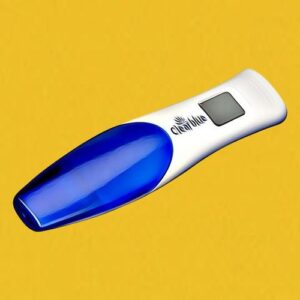Endometriosis is a complex condition that affects approximately 10% of women during their reproductive years. Here is an overview of what endometriosis is, what causes it, the symptoms, how it impacts fertility, diagnosis, and treatment options.
What is Endometriosis?
The endometrium refers to the lining of the uterus, which builds up and sheds each month during a woman’s menstrual cycle. Endometriosis occurs when tissue similar to the endometrium grows outside of the uterus, most commonly in the pelvic area. This tissue still responds to monthly hormonal changes and breaks down and bleeds like the uterine lining, but has no way to leave the body.
When endometrial tissue attaches and grows on organs in the pelvis, it can cause inflammation, pain, and formation of scar tissue called adhesions. The ovaries, Fallopian tubes, bladder, bowels, and the lining of the pelvis are common sites of endometrial implantations. Rarely, endometrial tissue may spread beyond the pelvic cavity.
What Causes Endometriosis?
The exact cause of endometriosis remains unknown. Some theories suggest retrograde menstruation, hormonal imbalances, genetic factors, or problems with the immune system may be involved. Since the cause is uncertain, there are no known ways to prevent endometriosis from developing.
Who is at Risk for Endometriosis?
Endometriosis can affect women who menstruate, so it typically develops after the start of puberty. Those with a family history may be more likely to have endometriosis. The condition often improves after menopause when menstruation ceases. Endometriosis appears to be most common in women in their 30s and 40s. The condition knows no ethnic, social, or economic boundaries – it impacts women worldwide.
The Impact of Endometriosis on Quality of Life
For many women, endometriosis has a significant negative effect on their quality of life. The chronic pelvic pain and heavy menstrual bleeding can greatly impact daily activities, social life, relationships, career, education, exercise, and mental health. Studies show women with endometriosis have higher rates of depression, anxiety, isolation, low self-esteem, and sexual dysfunction.
Endometriosis often forces women to miss work, school, or social events when symptoms flare. The unpredictability of pain outbreaks and sudden, urgent need for restrooms due to bowel involvement creates anxiety going too far from home. Maintaining relationships and intimacy can be difficult when sex is painful. Frustration is common after seeing doctor after doctor without answers.
Raising awareness and validating women’s experiences is vital for improving diagnosis and treatment. Patients need support and coping strategies to manage endometriosis mentally as well as physically.
What are Signs and Symptoms of Endometriosis?
- Pain – The most common symptom is pelvic pain coinciding with menstrual periods. Pain may also occur during intercourse, bowel movements, or urination. Lower back pain and gastrointestinal upset are also common.
- Heavy menstrual bleeding – Excessive bleeding and clotting can occur with endometriosis. Bleeding between periods may also happen.
- Infertility and pregnancy problems – Up to 50% of women with endometriosis struggle with getting pregnant. Growths can block the Fallopian tubes or impair implantation. Those who conceive may be more prone to miscarriage or pre-term labor.
- Ovarian cysts – Blood-filled cysts can form when endometrial tissue grows on the ovaries. Ruptured cysts may cause sudden, severe pain.
- Fatigue and nausea – Many women with endometriosis report unrelenting fatigue and nausea, especially during their periods.
How Does Endometriosis Impact Fertility?
Endometriosis is one of the top three causes of female infertility. Several factors contribute to reduced fertility:
- Scarring and adhesions can distort the pelvic anatomy. This may obstruct the Fallopian tubes, prevent sperm from reaching the egg, or block passage of a fertilized egg into the uterus.
- Endometrial implants can grow inside the ovaries or Fallopian tubes, disrupting their normal function.
- Inflammation in the pelvis from endometriosis may impact fertility on a molecular level, affecting ovulation, sperm function, or embryo implantation.
- Substances released by endometrial implants may be toxic to sperm, eggs, or embryos.
Women able to conceive with endometriosis may still face complications like miscarriage, ectopic pregnancy, preterm birth, abnormal fetal position, and other risks. Getting pregnant early, when the disease is mild, improves outcomes.
Diagnosing Endometriosis
Unfortunately, a definitive diagnosis often takes years due to vague, overlapping symptoms. On average, women see five doctors over seven years before confirmation. Diagnostic steps may include:
- Medical history – Doctors inquire about symptoms, menstrual patterns, and family history. A physical exam checks for tender spots.
- Ultrasound – An ultrasound can detect ovarian cysts linked to endometriosis but does not visualize other pelvic implants. Ultrasound helps rule out other issues that cause similar symptoms.
- MRI – Advanced imaging techniques may show endometrial implants not visible on ultrasound. However, small lesions can still be missed.
- Laparoscopy – This minor surgical procedure allows doctors to visually inspect the pelvis and take biopsies. Laparoscopy remains the gold standard for definitive diagnosis.
Treating Endometriosis
As there is currently no cure, treatment aims to manage pain, protect fertility, and slow progression. Options may include:
- Over-the-counter pain relievers
- Hormonal contraceptives to control menstrual cycles
- Gonadotropin-releasing hormone (GnRH) agonists or antagonists to suppress estrogen production
- Progestin therapy
- Laparoscopic excision of endometrial implants and adhesions
- Laparoscopic presacral neurectomy to interrupt pain pathways
- In vitro fertilization to improve fertility when endometriosis is advanced
- Hysterectomy and removal of ovaries if chronic pain persists after childbearing age
Due to the complexity of endometriosis, multi-disciplinary care from gynaecologists, fertility specialists, and pelvic pain experts provides the best outcomes. Early diagnosis, proper management of symptoms, and trying to conceive sooner rather than later offer women with endometriosis the greatest chances for relief.
Photo credit; “Endometriosis” by Anthony Cunningham for Zoom Baby
Zoom Baby is a leading supplier of Pregnancy Tests and Ovulation Test Kits





